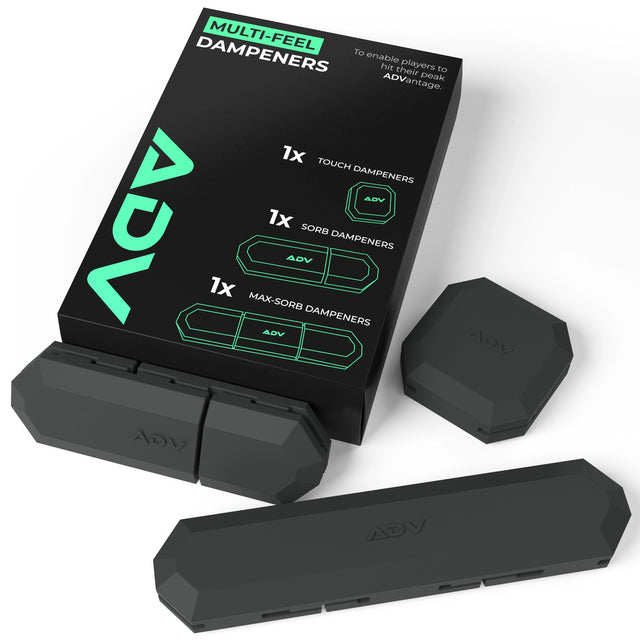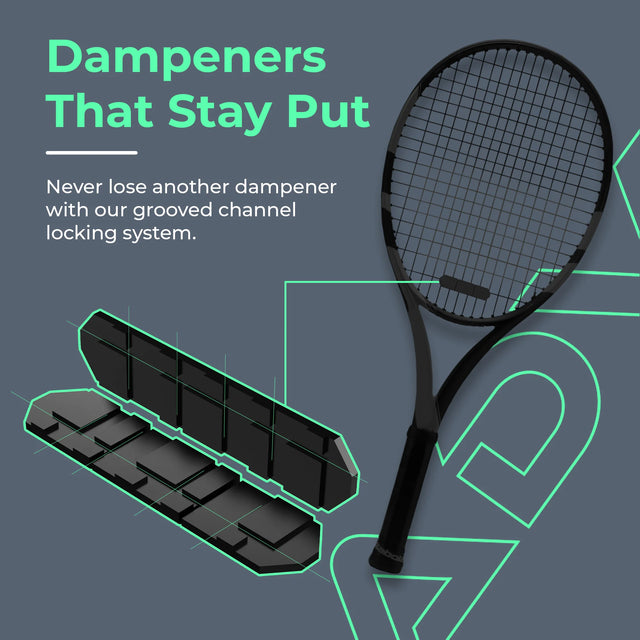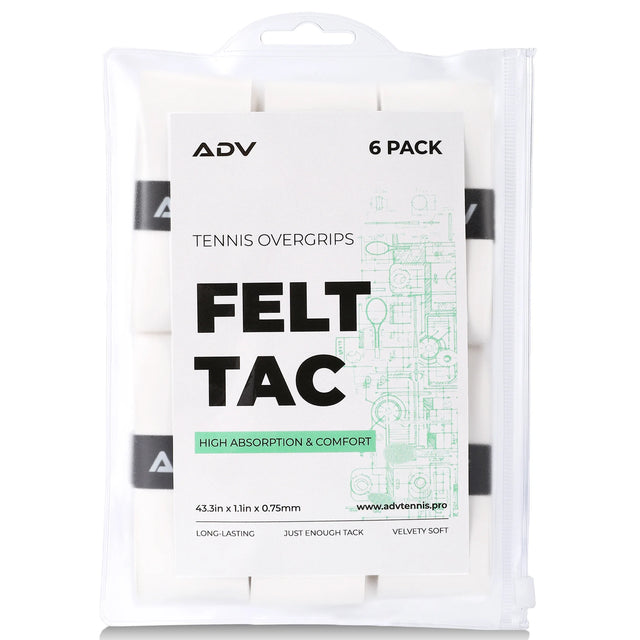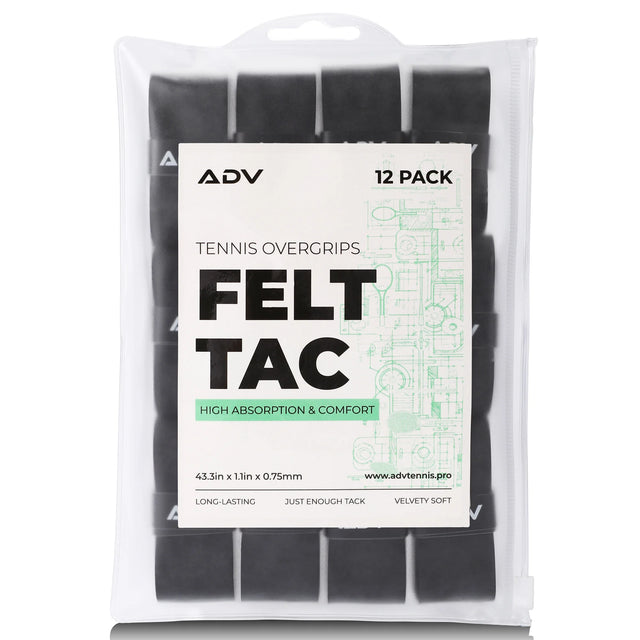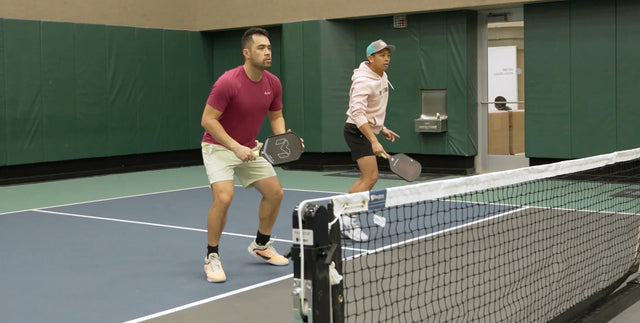Tennis Racket Dampeners: Why They're Worth the Investment
Tennis racket dampeners are small devices fitted between the strings of a tennis racket to minimize the racket's vibration. These devices, also known as tennis string dampeners, come in various shapes and sizes and are made from materials like silicone or rubber. Incorporating a dampener for a tennis racket into your equipment setup is more than just about comfort; it's a strategic choice for injury prevention and improved racket handling. Vibrations transmitted through the racket to the hand and arm can lead to fatigue and conditions such as tennis elbow. By dampening these vibrations, players can experience a smoother feel with each stroke, resulting in improved control and reduced strain on their muscles and joints. Furthermore, the psychological comfort of playing with a tennis dampener installed cannot be underestimated. It helps players feel more connected and in control of their racket, boosting confidence on the court.

The Evolution of Dampener Design and Technology
Over the years, tennis racket dampeners have undergone significant evolution in both design and technology, reflecting advancements in materials science and player preferences. Early dampeners were often simple rubber bands, famously used by players like Andre Agassi in the 1990s as a cost-effective alternative to traditional models. Today’s dampeners, however, are crafted from high-quality silicone and other advanced polymers, offering improved durability and a wider range of vibration absorption. Manufacturers now produce dampeners in various shapes, such as button, worm, and even novelty designs, allowing players to choose devices that best suit their tactile and aesthetic needs. Beyond standalone accessories, modern racket frames may feature built-in damping systems, such as vibration-dampening mesh integrated into the handle, which further reduces unwanted feedback. This evolution has made dampeners more effective, user-friendly, and customizable, enabling players at all levels to enhance comfort, minimize distractions, and express their individuality on the court.
Understanding the Function of Tennis Racket Dampeners
How Dampeners Reduce Vibrations
Tennis vibration dampeners serve a critical function by absorbing the shock generated when a tennis ball strikes the racket. This shock, if not mitigated, propagates through the racket's frame, creating a high-pitched vibration that can be uncomfortable over time. Dampeners work by altering the frequency and amplitude of these vibrations, providing a cleaner, more muted impact sensation. This modification helps maintain the integrity of play, allowing athletes to focus more on their technique and less on the distracting vibrations of their equipment.
Impact on Sound and Feel of the Racket
The presence of a tennis racket dampener significantly alters the acoustic effects of hitting a tennis ball. Without a dampener, the strings produce a pronounced twang, which can be jarring to players. With a dampener installed, the sound is subdued, resulting in a thudding noise that many players find more appealing and less disruptive. This alteration in sound is not just about player comfort but also about the tactile feedback received, which is crucial for precise stroke execution.
Comfort and Injury Prevention Benefits
One of the main benefits of tennis dampeners is the enhanced comfort they provide during play. By reducing the racket’s vibration, dampeners help prevent the onset of fatigue in the player's hand and forearm, crucial for those engaged in long matches or frequent play. Additionally, this reduction in vibration plays a significant role in preventing injuries like tennis elbow, a common ailment among racquet sports players. The less shock that travels through the arm, the lower the risk of such injuries, making dampeners an essential component of a player’s gear.
Placement and Usage
Vibration dampeners are typically placed just below the last cross string at the bottom of the racket’s string bed, nestled between the main strings. Placement here maximizes vibration absorption and ensures the dampener stays secure during play. Alternative placements, such as along the outer edges, may alter effectiveness and are less common.
Psychological Advantages for Players
The mental component of tennis is equally vital as the physical aspects. Using a racket dampener can significantly influence a player's psychological state, enhancing their overall performance on the court.
- Stability and Predictability: A dampener adds stability to the racket, making its response during games more predictable. This consistency helps players adjust their tactics and strokes with greater confidence.
- Increased Confidence: Knowing that the racket will behave as expected without unpredictable vibrations boosts a player's confidence. This assurance allows players to focus on their game strategy and execution without second-guessing their equipment.
- Enhanced Focus: With reduced distractions from racket vibrations, players can concentrate better on their match. This heightened focus can lead to improved performance, especially during critical points in a game.
- Commitment to Strokes: The comfort provided by dampened vibrations encourages players to commit more fully to their strokes. This commitment often results in more powerful and precise shots, crucial for winning rallies.
- Performance Enhancement: The cumulative effect of psychological benefits leads to overall performance enhancement. Players can leverage their improved mental state to make smarter plays and react more swiftly to opponents’ actions.
The integration of a tennis racket dampener not only aids in physical playability but also elevates a player’s mental game. By fostering a supportive playing environment through equipment stability, players can exploit their skills to the fullest, knowing their gear complements their style and strategy. Let’s discuss if this adjusted format aligns with your expectations for the content structure.
Tennis Racket Dampeners Types
Button-Shaped Dampeners
Button-shaped tennis racket dampeners are the most recognizable form of vibration-damping devices. They fit snugly in the lower part of a racket’s string bed, nestled between intersecting strings. This type effectively absorbs shock at a concentrated point, significantly reducing the vibrations felt during ball impact. The compact size and straightforward design of button-shaped dampeners make them a popular choice for players at all levels, providing a straightforward solution to managing racket vibrations with minimal alteration to the feel of the racket.
Worm-Shaped Dampeners
In contrast to the localized impact of button-shaped models, worm-shaped tennis dampeners cover a larger portion of the racket's string bed. This design allows for a broader distribution of vibration absorption, offering a different feel that appeals to players sensitive to even minor vibrations. The worm-shaped dampener is particularly valued for its ability to provide a consistent dampening effect across a wider area, which can be crucial for players who engage in a variety of playing styles and strokes.
Comparing Vibration Control Levels
Each type of dampener offers varying degrees of vibration control, which can affect a player's performance and comfort. Button-shaped dampeners generally provide a more focused dampening effect, ideal for players who experience discomfort from sharp, sudden vibrations. Worm-shaped dampeners, with their elongated coverage, tend to offer a more uniform reduction in vibration, which can help in maintaining a consistent response from the racket across different types of strokes. Understanding the specific vibration control provided by each type of dampener is crucial for players when selecting the best option to suit their individual needs and playing style.

Common Myths and Misconceptions
There are prevalent myths and misunderstandings surrounding vibration dampeners and their actual effects. One of the most common misconceptions is that dampeners can prevent or cure tennis elbow and other arm injuries. While many manufacturers and players believe that these devices offer protection against joint and muscle strain, scientific studies have not conclusively proven that dampeners reduce the risk of injury. In reality, their primary function is to alter the sound and feel of the ball striking the strings, providing a more muted and less jarring auditory experience rather than significantly reducing the physical vibrations that reach the arm. Another myth is that using a dampener can drastically improve a player’s performance or shot accuracy. In truth, the dampener’s effect is largely psychological, offering comfort and confidence rather than tangible changes in racket responsiveness or power. Some players also mistakenly think that all professionals use dampeners for performance reasons, when in fact, many choose them simply for personal preference or to reduce distracting string noise. Understanding these realities helps players make informed decisions, ensuring that expectations align with the actual benefits dampeners provide—primarily comfort and a more pleasant playing experience, rather than injury prevention or game-changing enhancements.
How to Choose the Right Dampener.
Factors to Consider
Choosing the right tennis dampener is a critical decision that can significantly influence your playing experience. This selection process should focus on several key aspects: the material, size, and shape of the dampener, each of which has a profound impact on how it performs on the court.
- Material: The material of the dampener affects how it modulates vibrations and impacts the feel of the racket. Rubber dampeners are known for their firmer grip on the strings, offering enhanced stroke control, which can be crucial for precision play. Silicone dampeners, on the other hand, generally provide a softer impact, dampening the vibrations more and thus potentially reducing arm fatigue or discomfort. The choice between these materials often hinges on personal comfort and any pre-existing conditions, such as arm or elbow pain.
- Size: The size of the dampener plays a direct role in the level of vibration control it offers. Larger dampeners cover more string area, absorbing more vibration and thus providing a more stable feel to the racket. However, this increased size can slightly alter the weight distribution and balance of the racket, which might affect the swing and overall handling during play.
- Shape: The shape of the dampener also determines its effectiveness and the extent of its impact on the racket's performance. Button-shaped dampeners, typically smaller and more discreet, fit snugly in the lower center of the string bed, affecting fewer strings and thus maintaining the racket's original playing characteristics. In contrast, worm-shaped dampeners are more extensive, threading through multiple strings to offer a broader dampening effect, which can significantly alter the feel and sound of the racket upon ball impact.
Experimentation is key when it comes to choosing the right tennis dampener for your game. Players should consider testing various dampeners under match conditions to understand how each type affects their performance and comfort. This hands-on approach allows players to feel firsthand how the dampener influences the racket's response, sound, and overall feel during play. It's also advisable to test dampeners in different environmental conditions and against various types of opponents to gauge their effectiveness across a broader range of scenarios. This thorough testing ensures that the chosen dampener not only fits the player's immediate needs but also adapts well to varying play styles and conditions.
Balancing Performance and Comfort
The ultimate goal in selecting a dampener is to find a balance between enhanced performance and increased comfort. While some players might prioritize reducing racket vibrations to prevent injuries, others might focus on how a dampener can improve their control and precision. The tennis racket dampener should complement the player's natural playing style without causing them to adjust their technique drastically. Players should weigh how different dampeners affect their speed, accuracy, and endurance, particularly during long matches where fatigue and discomfort could otherwise become detrimental.
Evaluating Ease of Installation and Durability
Another practical aspect to consider is the ease of installation and the durability of the tennis dampener. Some dampeners are designed for quick and easy attachment, which can be particularly appealing to players who frequently switch between different rackets during matches. Durability is also critical, as frequent replacements can be costly and inconvenient. Evaluating how well a dampener withstands regular use, and how it performs over time, can be as important as its immediate impact on play. Players should look for dampeners that not only fit well with their rackets but also offer long-term reliability and resistance to wear and tear.
Where to Buy and Pricing Considerations
When it comes to purchasing a tennis racket dampener, players have several options, ranging from specialty sports stores to online retailers. The price points vary based on brand, material, and specific features aimed at enhancing performance. While basic dampeners might be very affordable, premium models designed for professional use or specific customization features can command higher prices. Players should consider their budget and playing frequency when selecting a dampener, ensuring they choose a product that offers the best value for their specific needs and level of play.
Adjusting Your Racket’s Response for Better Control
Adjusting the response of a tennis racket using a tennis dampener is a critical aspect of racket customization that can lead to improved control over shots. By modifying how the racket handles vibrations from the impact of the ball, dampeners can change the racket’s feedback, giving players a more solid or more cushioned feel as desired. This adjustment can be particularly beneficial during volleys and serves where precision and control are paramount. The right dampener can transform the playing experience by aligning the racket's response with a player’s tactical needs and personal comfort preferences. The sound a racket makes upon impact is not just a byproduct of the game; it can influence a player's confidence and perception of their performance. A tennis racket dampener helps modify this sound, which can make the racket feel more powerful or precise. Many players find that a less noisy racket allows them to feel more in control, which in turn boosts their confidence during play. Additionally, the tactile feedback from a well-dampened racket can reassure players about the quality of their strokes, further enhancing their confidence and ability to stay focused under pressure.
Installation and Maintenance of Dampeners
Proper installation and maintenance of your tennis racket dampener are essential for maximizing its effectiveness and longevity. By following a few straightforward steps and establishing good care habits, you can ensure your dampener continues to deliver optimal vibration reduction and comfort throughout its lifespan. Below are key guidelines to help you install, secure, maintain, and replace your tennis racket dampener.
- Step-by-Step Installation: Begin by selecting a clean, debris-free racket. Position the dampener just below the last cross string at the bottom of the string bed, as this is where most vibrations occur. For button-shaped dampeners, press firmly between the main strings until they click into place. For worm-shaped types, weave it through several adjacent strings following the manufacturer’s instructions. Ensure the dampener sits snugly and is fully engaged with the strings before use.
- Ensuring a Secure Fit: After installation, gently shake or tap the racket to confirm the dampener remains firmly in place. A properly installed dampener should not slide or wiggle during play. Regularly inspect the dampener, especially after intense matches or if you notice changes in sound or feel. If it appears loose or shifts during play, reposition it or reinstall as needed.
- Routine Cleaning and Maintenance: Over time, sweat, dust, and grime can accumulate on your dampener, affecting its performance. To clean, remove the dampener from the strings and wash it gently with mild soap and lukewarm water. Avoid harsh chemicals or abrasive scrubbing to prevent material degradation. Allow it to air dry completely before reinstalling. Regular cleaning not only preserves the dampener’s effectiveness but also helps prevent unwanted odors and potential string damage.
- When and How to Replace: Inspect your dampener periodically for signs of wear, such as cracks, fading, or loss of elasticity. If you notice the dampener no longer fits securely or the vibration-dampening effect has diminished, it’s time for a replacement. Simply remove the old dampener and install a new one following the initial installation steps. Replacing worn dampeners ensures consistent performance and helps protect your arm and racket from excessive vibration.
By taking care to install, secure, and maintain your tennis racket dampener properly, you’ll extend its lifespan and enjoy the full benefits it provides. Regular attention to cleaning and timely replacement will keep your equipment in top condition, supporting your comfort and performance every time you step on the court.

Investing in the best tennis dampener is not just about enhancing the physical aspects of your game; it’s also a strategic decision for overall comfort and performance longevity. Understanding what tennis dampeners are and how they contribute to your gameplay is crucial in making an informed choice that aligns with your personal playing style and health needs. Upgrade your court essentials with ADV Tennis. The right dampener can transform your experience by reducing unnecessary vibrations, stabilizing the racket’s response during play, and allowing you to engage more confidently and effectively in the sport.


